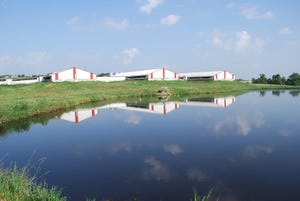Pesky Facts Get In The Way Of Packer Detractors
Never let the facts get in the way of one’s prejudices. That seems to be the mantra for some critics of the packing industry. From claims about packer behavior to concentration, some people don’t seem to be able to reconcile their views with the facts.
May 7, 2010

Never let the facts get in the way of one’s prejudices. That seems to be the mantra for some critics of the packing industry. From claims about packer behavior to concentration, some people don’t seem to be able to reconcile their views with the facts.
Take four-firm concentration in cattle slaughter. Some claim concentration has increased in the past decade and that four firms control 80% of all beef production. This was even repeated at the first workshop held by USDA and the U.S. Department of Justice (DOJ) in March to examine competition issues.
The claims are plain wrong. Concentration levels peaked in 1994 and have scarcely changed since then, according to USDA data and my own. Data from USDA’s Grain Inspection, Packers and Stockyards Administration (GIPSA) show that four-firm concentration in steer and heifer slaughter in 2008 was 79%, down from 80% in 2007, while concentration in fed-beef production fell to 76% in 2008 from 80% in 2007. My data reveal that the top four firms accounted for 70% of all cattle slaughtered in 2008.
The fact is that the fed-cattle sector has four strong large packers, plus several strong regional packers, which currently operate efficiently and profitably. This enables them to pay more for live cattle. That's why they were able to pay $95/cwt. or more for cattle in late March. That’s why they’re able to produce beef at a price that enables consumers to buy it.
The fact is the largest seven to 10 fed-beef packers have a far lower cost structure than small packers. If it took the industry as a whole $250/head to process fed cattle, beef would be priced beyond the reach of many consumers if wholesale and retail prices were adjusted to reflect such a cost.
Another claim is that packers make exorbitant profits and invariably at the expense of producers. The fact is packer profits vary enormously but have ranged in the past 20 years between 1% and 2% of total revenues. That’s not much of a margin in my book. Operating margins for the top four meatpacking firms (not just beef companies) in 2008 averaged 0.01%, vs. 0.5% in 2007 and a negative 0.2% in 2006, according to GIPSA data.
Packers reported a profitable year in 2009 despite the recession, in large part because they ran more efficiently than for years. But margins were still small. Tyson Foods, the largest processor of fed cattle, had an operating margin of 2.0%. JBS USA, whose results include its Australian beef business, had an EBITDA (earnings before interest, taxation, depreciation and amortization) of 3.5%. National Beef, the fourth-largest beef processor, had record net income but it was still only 2.6% of sales.
Meanwhile, GIPSA appears to be doing a better job of monitoring meat and poultry industry practices than its critics claim. Its work appears to be ensuring a high level of compliance with the Packers & Stockyards Act. GIPSA’s Packers and Stockyards Program (P&SP) conducts hundreds of field investigations and regulatory activities annually. These include competition, financial and trade practice issues.
In fact, it closed 1,059 investigations in these three categories in 2009. P&SP’s performance and efficiency remain robust, it says in its 2009 annual report. Its key performance measure of industry compliance with the Packers & Stockyards Act remained at 80% in 2009, the same as in 2008 but up from 73% in 2007.
P&SP also monitors the fed-cattle market weekly, a practice GIPSA critics seemingly ignore. P&SP in 2009 initiated 25 regulatory activities and three investigations in regard to the market. All three investigations are ongoing but no competition violations have been identified, it says.
A USDA-DOJ competition workshop on Aug. 26 will focus on beef, hog and other animal sectors. One wonders how much USDA at that workshop will acknowledge what P&SP’s annual report shows.
-- Steve Kay, BEEF magazine
About the Author(s)
You May Also Like



.png?width=300&auto=webp&quality=80&disable=upscale)

